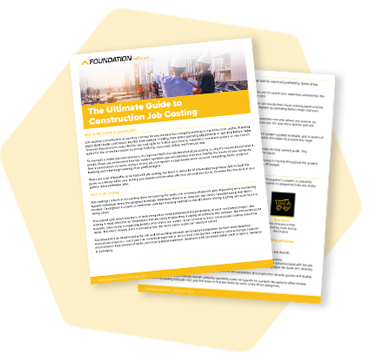
Not long ago, being on the “cloud” couldn’t have less to do with being productive. In fact, a lot of managers have probably had to tell their staff to get their heads out of the clouds.
Today, cloud technology is generating a huge buzz across the construction industry, but for some construction companies, the image of their accounting and payroll data floating around in cyberspace isn’t so appealing.
So, what is the cloud? And how does it compare to traditional on-premise software?
Both cloud and on-premise systems can be great solutions for contractors — it just takes a little research to discover which solution will work best for your company.
Here’s what you need to know:

Article Highlights Of Cloud vs. On-Premises Software:
- Cloud-based software typically requires less upfront investment than on-premises solutions, potentially offering a better return on investment for construction projects of all sizes, especially when considering operational costs and ongoing maintenance.
- On-premises systems provide greater control over data and infrastructure but often require significant investment in additional hardware and IT infrastructure, which may impact deployment options for construction companies.
- Cloud solutions enable real-time collaboration and remote access across various job sites, supporting digital transformation in the construction sector and enhancing the management of complex projects.
- The choice between cloud and on-premises systems depends on factors such as project complexity, infrastructure costs, and the need for a reliable Internet connection. Making an informed decision requires careful evaluation of both cloud environments and on-premise infrastructures.
- Security considerations differ: cloud-based services managed by cloud service providers may have different vulnerabilities than on-premise solutions, which require physical location security to prevent unauthorized access.
What is the Cloud, and What is On-Premise Software?
Cloud software, sometimes referred to as software as a service (SaaS), is software that is hosted by a service provider and accessed by users via the Internet.
This contrasts with on-premise software, like your word processor, which is owned by users and run from their own on-site hardware.
What are the Differences Between the Cloud and On-Premise?
In the ever-changing construction industry, factors of cost and convenience make cloud computing especially attractive to contractors.
As contractors begin evaluating new software options, they’ll have to make the decision between cloud-based solutions and on-premise solutions, so here are a few things to consider in the process:
-
Cost and Setup
The upfront cost of cloud-based applications is significantly lower than on-premise applications.
There is usually an initial set-up fee followed by a monthly subscription fee, which often includes maintenance and means that construction companies are simply paying for access instead of ownership while receiving automatic updates.
In most cases, all contractors need to access the cloud application is an internet connection.
In contrast, on-premise applications sometimes require specific hardware and a strong IT infrastructure to host the software — increasing setup costs substantially if these resources aren’t already in place.
-
Reliability
It’s important for contractors to remember that the cloud is still a fairly new technology and that its use is still evolving on a daily basis.
Not everything is set in stone with the cloud, and periodic system updates will occur.
Things that contractors may have done one way in the past, like accessing specific reports from a specific interface, may have to be done a little bit differently, especially as automatic software updates occur.
In contrast, on-premise software has been around for decades and is more comfortable for certain users.
Some users place such a strong priority on stability that they even elect not to install software updates — which is not advisable due to the security risks this could present — and this is an option that on-premise solutions afford.
-
Data Hosting
Some construction companies lean toward on-premise software because their data is hosted on-site, which brings a certain peace of mind.
However, it’s still recommended that contractors back up their data and store copies off-site.
With the cloud, data is hosted and backed up by the service provider, so contractors don’t have to worry about a thing.
The trade-off is that contractors will have to accept that their construction data is being stored elsewhere and someone else is responsible for their maintenance.
-
Maintenance
When using a cloud-based application, construction companies don’t have to worry about backing up their data or installing updates.
All of this is done at the hosting site by the cloud provider, so contractors can be assured that their data is safe and that they’re always using the latest version of the software.
With on-premise applications, this responsibility rests on the shoulders of the contractor. The benefit of this is that these contractors can schedule maintenance items during times that are convenient for their flow of business.
Contractors using the cloud are reliant on their service provider when it comes to updates, security patches, and backups, but they don’t have the same burden of handling them in-house.
-
Convenience and Mobility
One of the best features of cloud-based applications is that they are incredibly convenient to access at any time, from anywhere.
In the construction industry, where work happens on construction projects rather than in offices, the ability to access data remotely can significantly improve project efficiency.
To access their data, all contractors need is the Internet and a computer or mobile device. This allows contractors to log in from the office and jobsites to update their project information.
This, in turn, gives project managers the ability to access real-time data.
The downside to this is that if contractors cannot get an Internet connection, in some cases, they cannot access the application or the most recent versions of the data.
On-premise software, on the other hand, is always accessible on machines on which it’s installed but only on machines on which it’s installed, so contractors with on-premise applications are also limited as far as where they can see and work with their data.
-
Ownership and Control
A contractor who purchases on-premise software owns that system indefinitely. They have complete control over updates and other maintenance items.
Additionally, they can access it whenever they need to and can schedule their own maintenance and downtime as convenient.
When using a cloud-based application, contractors have no control over system updates or downtime.
Whether due to scheduled maintenance or a problem on the provider’s end, downtime means that contractors will not be able to access their data or perform work in the system, which, depending on the time of day, could be a problem.
While unplanned service interruptions are nearly impossible to account for — just like hardware issues — contractors may want to have a conversation with potential SaaS providers about the frequency and schedule of their system maintenance.
-
Building a Construction Tech Stack
Successful contractors are always looking for construction software that scales with their operations. Many contractors build a tech stack — or group of software that work together to modernize their operations — to save time, receive unique insights, and maximize profitability.
For example, a contractor may start with a construction-specific accounting software as the base of their tech stack.
From there, they may invest in integrated payroll software, human resources software, and estimating software. Each software would sync data, limiting manual data entry and providing valuable insights.
Oftentimes, building a construction tech stack is easier with cloud software because it doesn’t come with the same infrastructure considerations as its on-premise counterparts.
On-Premise vs. Cloud: Which is Better for Me?
Today’s software purchase goes beyond just features and functions. Delivery options have become a huge factor in the search for construction software solutions.
The cloud is a great option for smaller contractors who want sophisticated software but have a limited budget or for contractors who need to access data from multiple locations.
On-premise software, on the other hand, is great for the contractor who already has the required hardware and an IT infrastructure in place.
Data security is a crucial element when deciding between cloud vs. on-premise options. According to Verizon’s 2020 Data Breach Investigations Report (DBIR), on-premise was involved in about 70% of breaches, whereas cloud-based were involved in just 24%.
The most important thing for contractors to remember is to do their due diligence and to research all their options in order to determine which solution is best for their particular businesses.
The right choice will give contractors the ability to focus more on their construction projects and on growing their construction business.
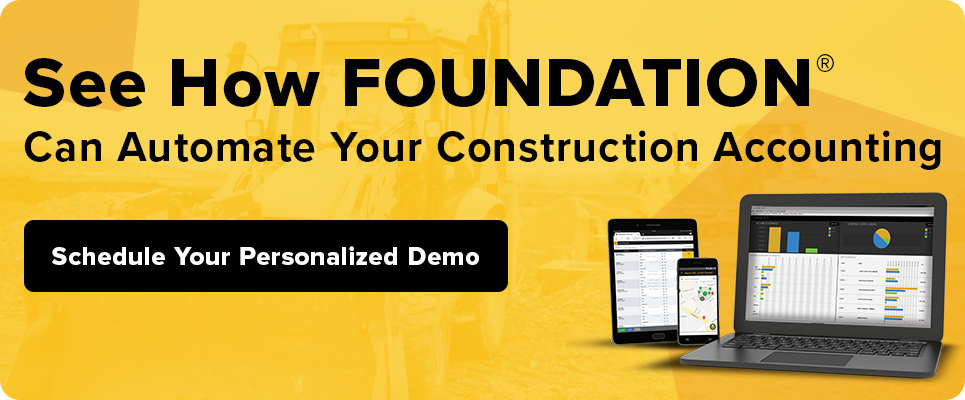
Foundation Software Offers On-Premise and Cloud Software
Contractors should factor in whether software is on-premise or cloud-based when doing preliminary research and consider the points above before investing in construction software.
Some software providers — like Foundation Software — offer on-premise and cloud-based versions of the same construction software.
When that’s the case, it’s important to ask about pricing and maintenance questions, as those will likely differ depending on the option you select.
Foundation is a leading provider of construction software that helps you modernize your:
- Accounting (FOUNDATION®)
- Payroll (Payroll4Construction)
- Estimating (McCormick and The EDGE®)
- Human resources (hrHQ)
- Project management (ProjectHQ®)
- Time Tracking (WorkMax)
- Safety (SafetyHQ®)
While all of Foundation’s products are cloud-based, some options like FOUNDATION, McCormick, and Payroll4Construction are also available on-premise.
For more information about Foundation’s products, click here.
Share Article
Keep on current news in the construction industry. Subscribe to free eNews!
Our Top 3 YouTube Videos
Learn about our software more in depth with product overviews, demos, and much more!
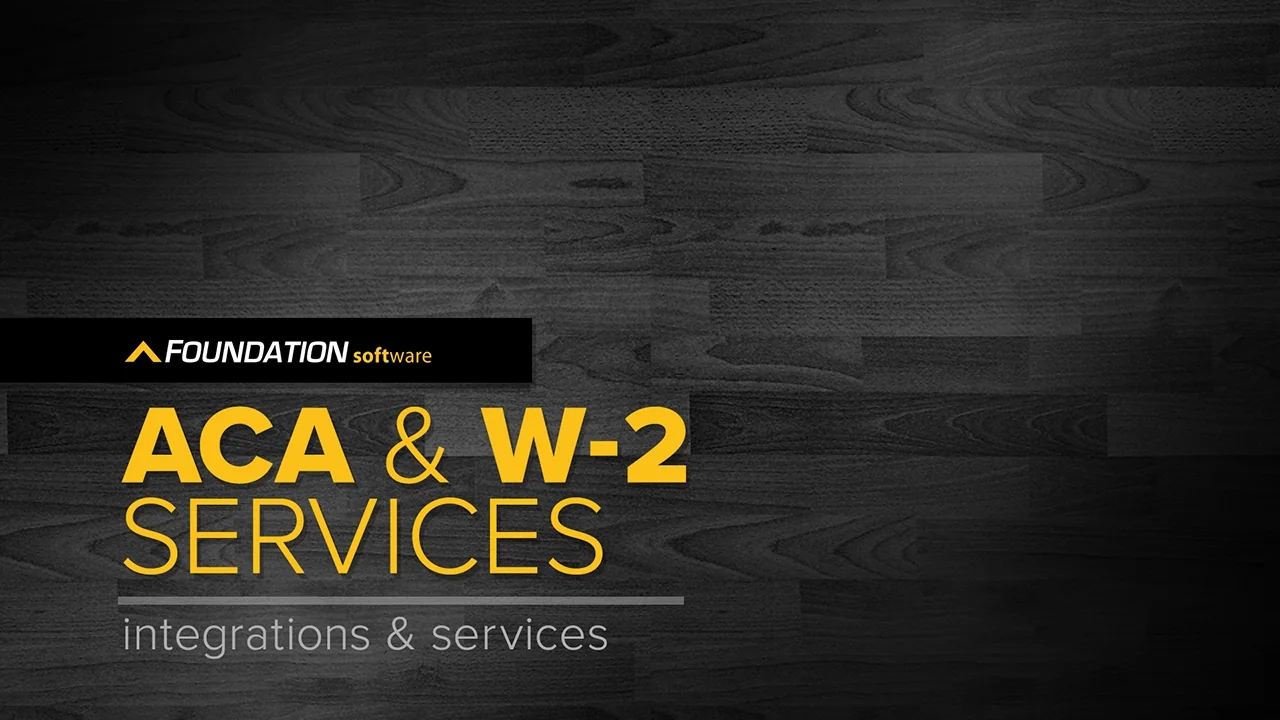
Our ACA reporting & e-filing services include official 1094-C and 1095-C IRS reporting, optional e-filing (no applying for a TCC code required), mailing to your employees and experienced support to help you.
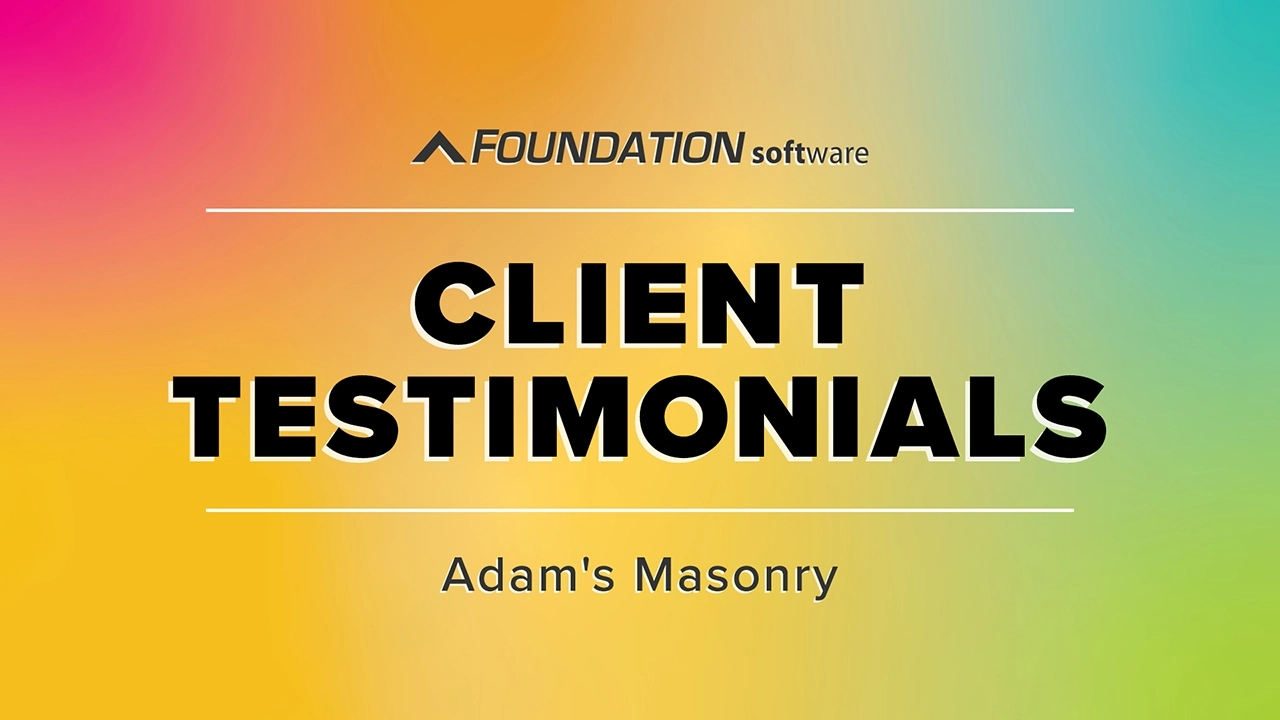
There are plenty of reasons to make FOUNDATION your choice for job cost accounting and construction management software — just ask our clients!
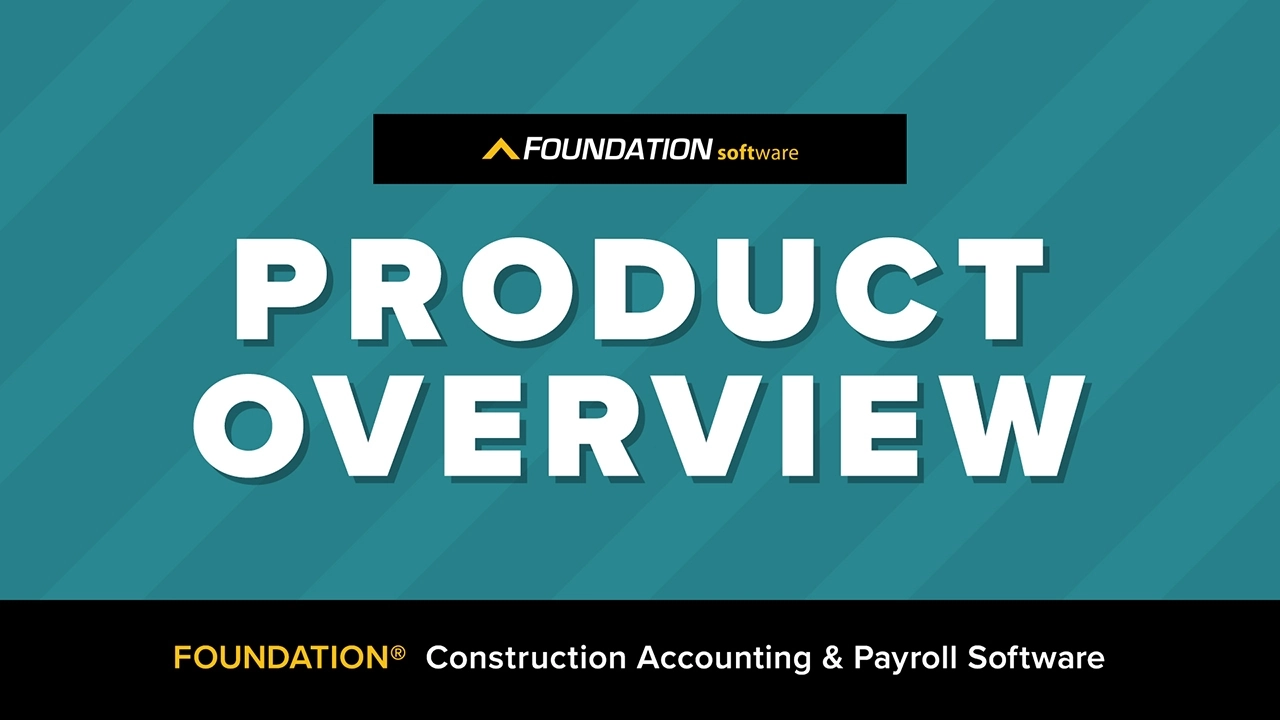
From job cost accounting software, to construction-specific payroll. Get an overview on your next all-in-one back-office solution.



